Inside the new theatre at Jacob’s Pillow and its ‘magic box’, part of a pioneering complex designed for dance
Jacob’s Pillow welcomes the reborn Doris Duke Theatre by Mecanoo, a new space that has just opened in the beloved Berkshires cultural hub for the summer season
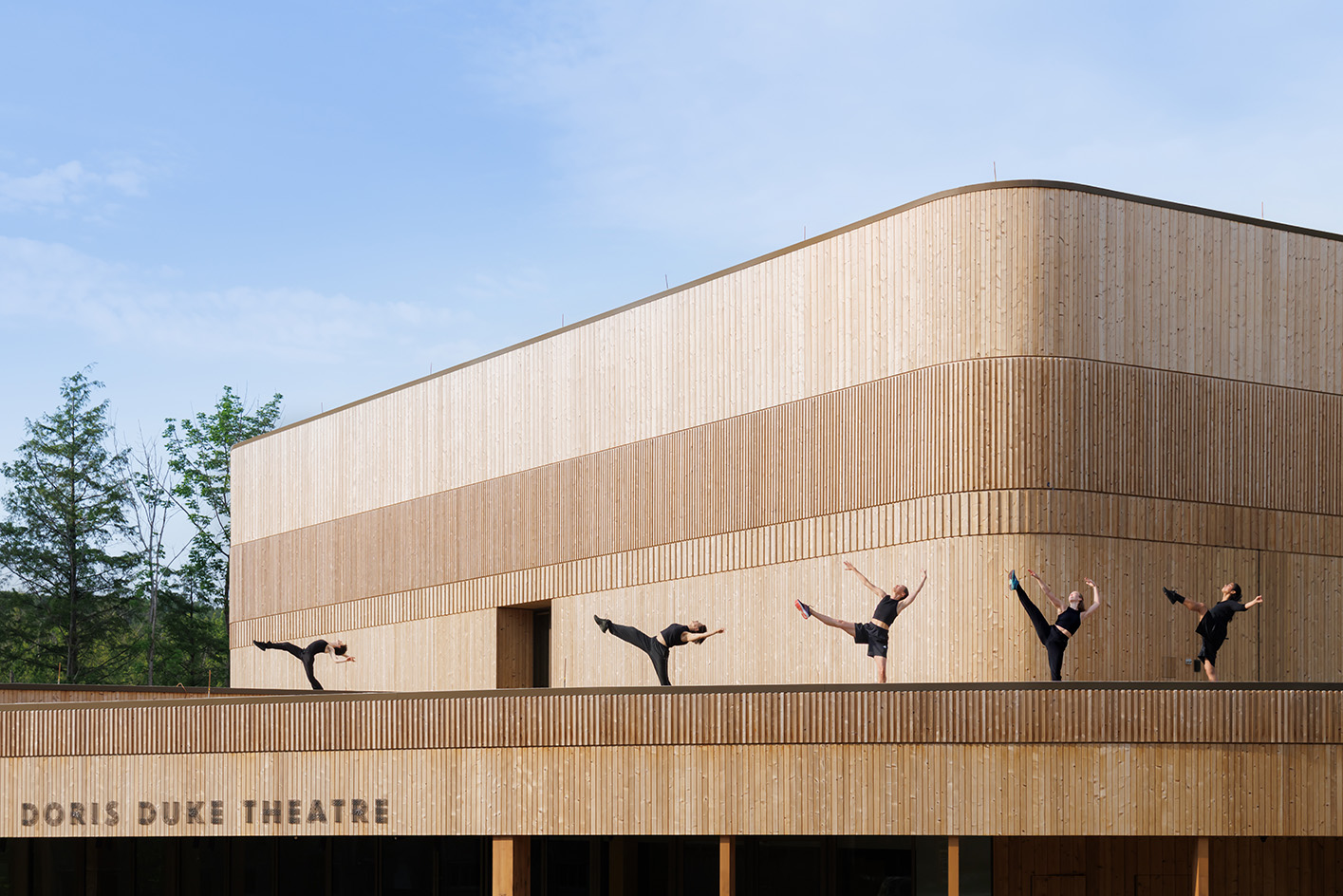
There is nothing much like Jacob's Pillow, the renowned cultural hub that is home to America's longest-running international dance festival, and whose campus in the leafy Berkshires is a designated National Historic Landmark. The complex, which hosts performances, residences and a school, in a year-round programme, has been growing organically – figuratively and literally – since its inception in 1933. Today, it is widely acknowledged for its pioneering history in its art form and represents an important centre for dance in the country, as well as globally.
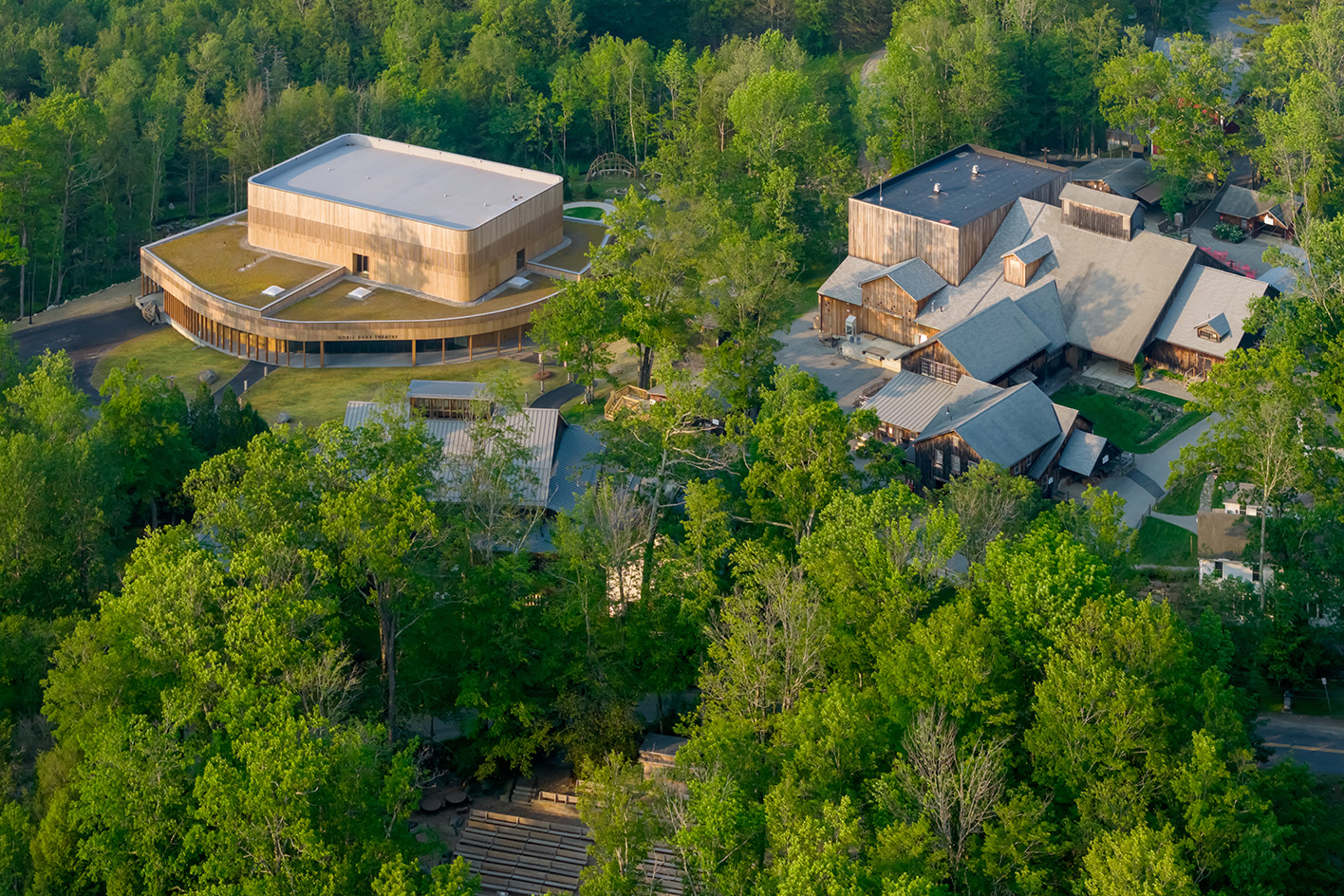
Jacob's Pillow and the Doris Duke Theatre: a history
Jacob's Pillow’s revolutionary founder, modern dance pioneer Ted Shawn, was in search of a home for his all-male company (a rarity at the time), Ted Shawn and His Men Dancers, when he came across a farm on top of a wooded hill in Becket, Massachusetts. Accessed via a zigzagging road, the site was locally referred to as 'Jacob's Ladder' (from the Biblical story) and had existed since the 1700s. A round rock on the site resembling a pillow soon gave the venue its name. There, the company's dancers slowly built – often with their own hands and while living off-grid on-site – a family of structures using the area's traditional timber frames, which eventually became the vibrant campus you find there today.
The complex contains buildings that house offices, rehearsal rooms, an archive and exhibition centre, and of course, stages – among them, the Ted Shawn Theatre (which was thoroughly renovated in 2022) and the breathtaking, outdoor Henry J Leir Stage where shows take place against the backdrop of the surrounding rural landscape. A third performance site, the Doris Duke Theatre, completed the set, but in 2020 it was tragically destroyed by fire.
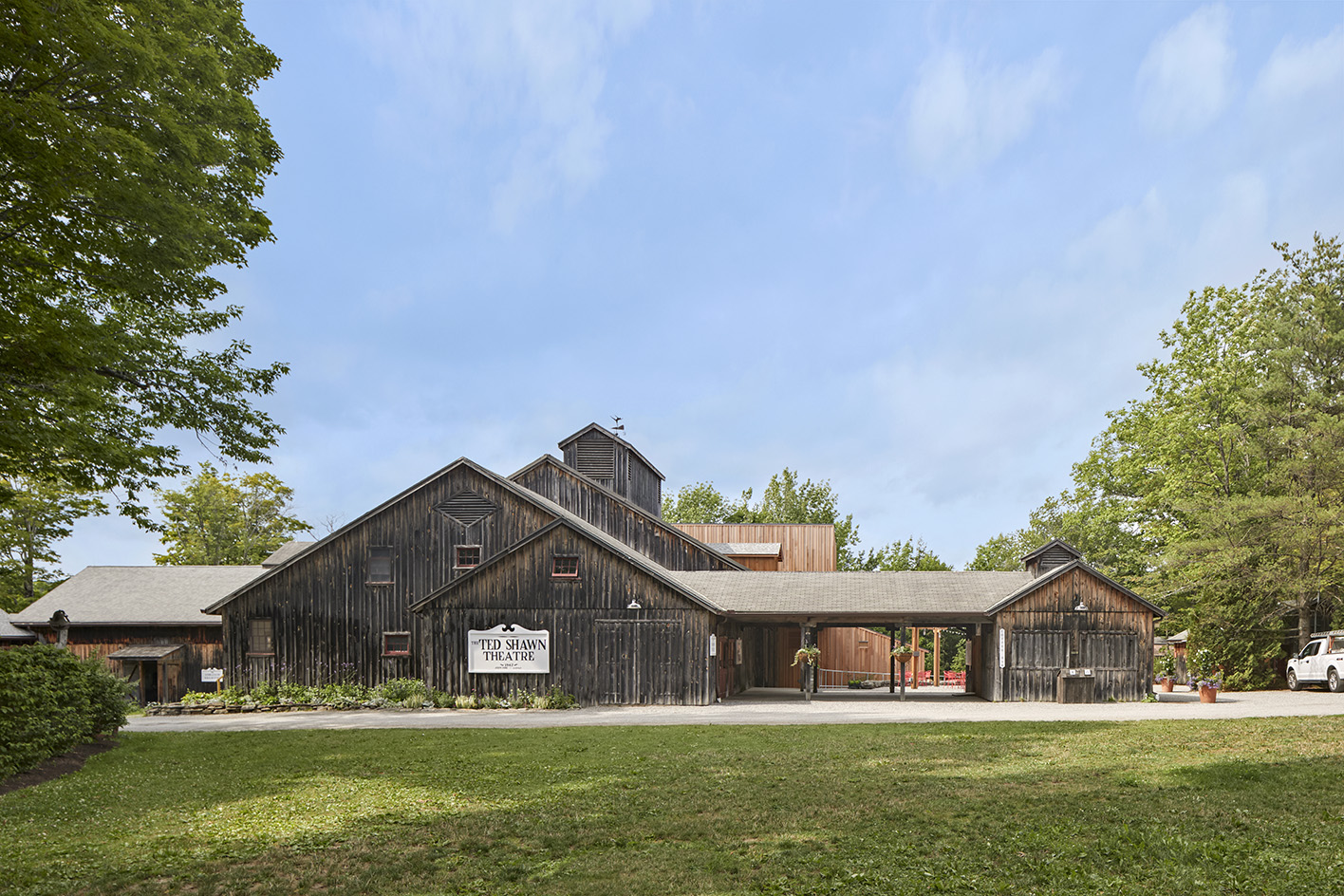
To make up for this loss and responding to the organisation's growing needs, Jacob's Pillow, now headed by director Pamela Tatge, commissioned Dutch architecture studio Mecanoo to create a new home for its third stage. Architect and practice founder Francine Houben unveiled her design for the new Doris Duke Theatre in 2023, working with New York design firm Marvel and artist Jeffrey Gibson, whose Choctaw-Cherokee heritage is often reflected in his art, inspired by the North American Indigenous aesthetic. Jacob's Pillow rests on the ancestral homelands of the Muh-he-con-ne-ok or Mohican people, and acknowledging this and having the North American Indigenous community be an integral part of the new design was pivotal to the dance centre's plans and future.
It was equally critical for the complex to develop holistically and on a larger scale, too, allowing visitors to experience not just a specific performance when they visit, but the wider campus, its nature, and cultural and architectural heritage.
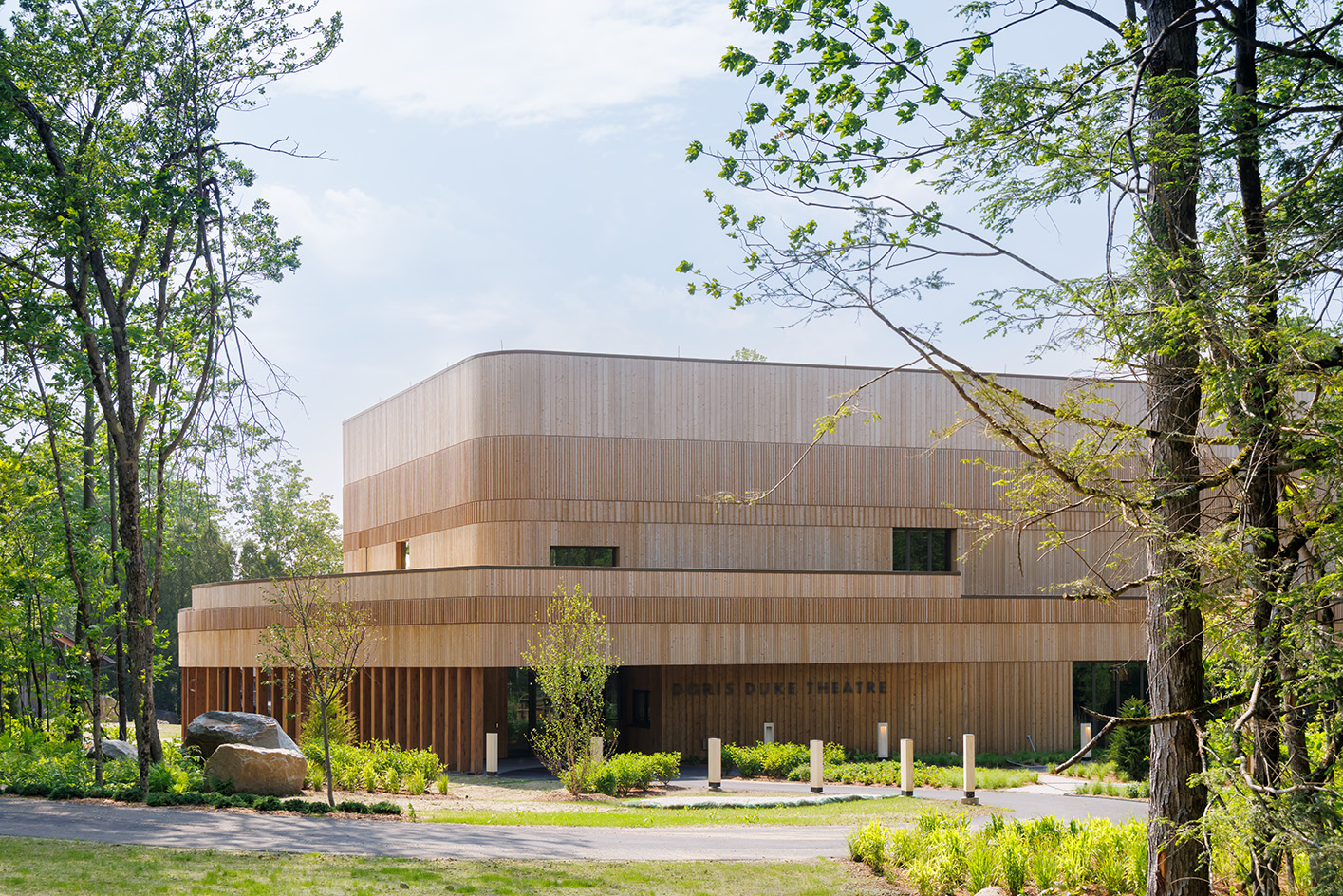
Tour the latest campus addition at Jacob's Pillow
Tatge explains why Mecanoo was the perfect fit for the commission: 'There were a number of reasons why we picked Francine. One is her deep experience in creating theatres, and we had to make sure that this was a theatre that was going to work for us. The second is her amazing work with wood; she engages with it in a very poetic way.
‘She had also recently created a reimagined wood building on her property in the Netherlands, called the Shed – it is a nonprofit that supports performance, meetings, and retreats in dialogue with the landscape. I thought, if someone can make such magnificent work on a large scale, and can also make something like this, she's our candidate. And the final thing, which was really important, was that we asked every design team to [include] an Indigenous artist. She selected Jeffrey Gibson, who has a performance background. For all those reasons, Mecanoo was the right choice.'
Receive our daily digest of inspiration, escapism and design stories from around the world direct to your inbox.
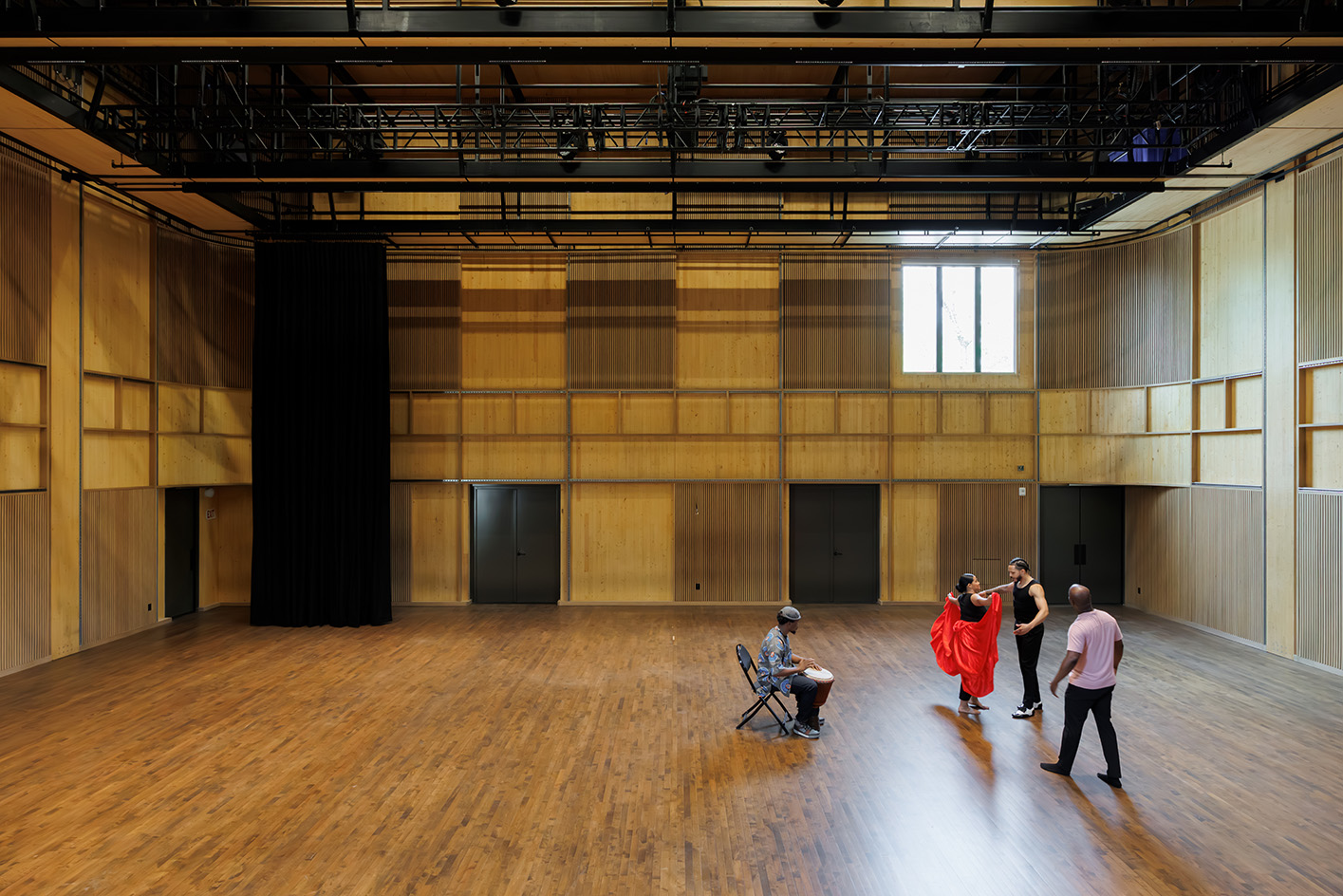
All existing buildings at Jacob's Pillow follow the typical local vernacular, conceived to be highly functional and pragmatic. They are beautiful in their gentle, wood architecture and utilitarian looks. The reimagined Doris Duke Theatre sits on the site of the former structure and echoes the same spirit, using, for example, modern timber construction. The new building, however, aims to be more open and more inclusive and accessible, as well as more flexible and larger – the main stage seats 230 people – than its predecessor, while maintaining the old theatre's intimacy and warm feel.
Following these themes, both Tatge and Houben agreed that the building had to be connected to its land. 'We [were] not building a theatre in Brooklyn,' Tatge says. 'It needed to resonate with the surrounding environment, and also be responsible in terms of sustainability. We needed to make environmentally conscious decisions, and also embrace new technologies and make sure the campus is accessible.’
'Jacob's Pillow is a spectacular place,' says Houben. 'It is a collage of buildings. I loved the colour and tactility of the old [Doris Duke] building, and how it opened and connected to nature. That is one of the unique things here; you are always connected to nature. Also, it is on Indigenous land, and all the buildings are of colonial typology. We wanted to go back and celebrate the diversity and the Indigenous history of the site.'
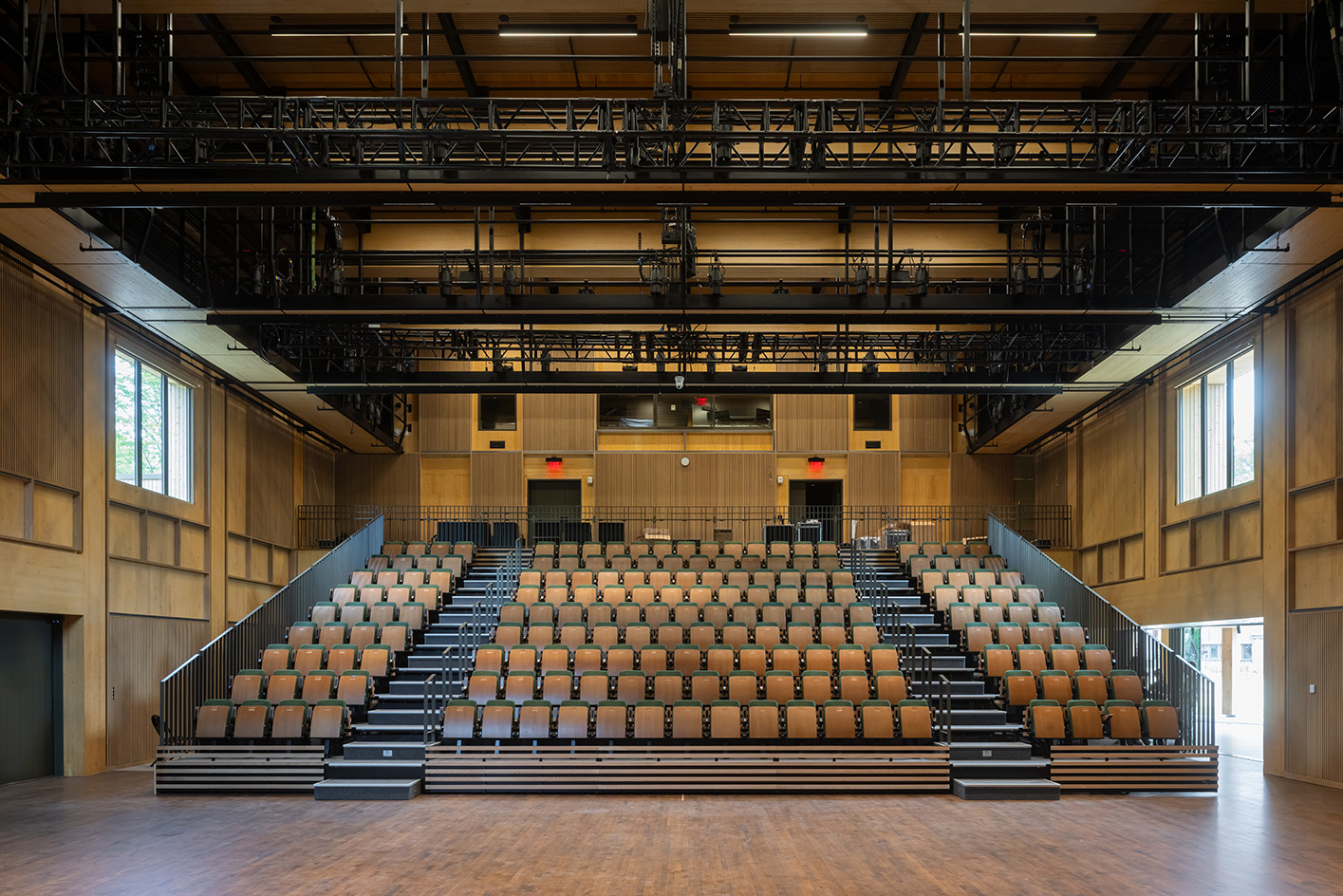
The structure is built in pine, which will age and turn silver over time. Its rounded shape and the garden behind it reflect shapes and layouts that are important in Indigenous culture – as does the number '7', which makes its appearance in various elements, such as the horizontal 'bands' of timber cladding seen on the external skin.
The rounded form is 'thanks to Jeffrey Gibson, who pointed out that Indigenous structures are circular and colonial structures are all right angles,’ continues Houben. ‘We [had] no curves at Jacob's Pillow. What would it mean to introduce a curve? So we introduced this hugely inclusive veranda that represents what we want this place to be. What we want this theatre to be is a welcoming space for all. The final form is not a perfect circle, but there is something really important about imperfection.'
As a result, the building's ground-level flowing veranda leads to a west-side lobby, welcoming guests in a sheltered, pre-show area. Another lobby on the east side can be used flexibly as a rehearsal space and multipurpose event area, spilling out to a lush garden that pushes the boundaries of dance performance. Here, art pieces including contributions from Indigenous artists will be displayed, and there's also a medicinal garden and a fire pit for gatherings. And, of course, there was a reason why this garden sits on the east, Houben explains: 'According to Indigenous philosophy, you need to enter from the east.'
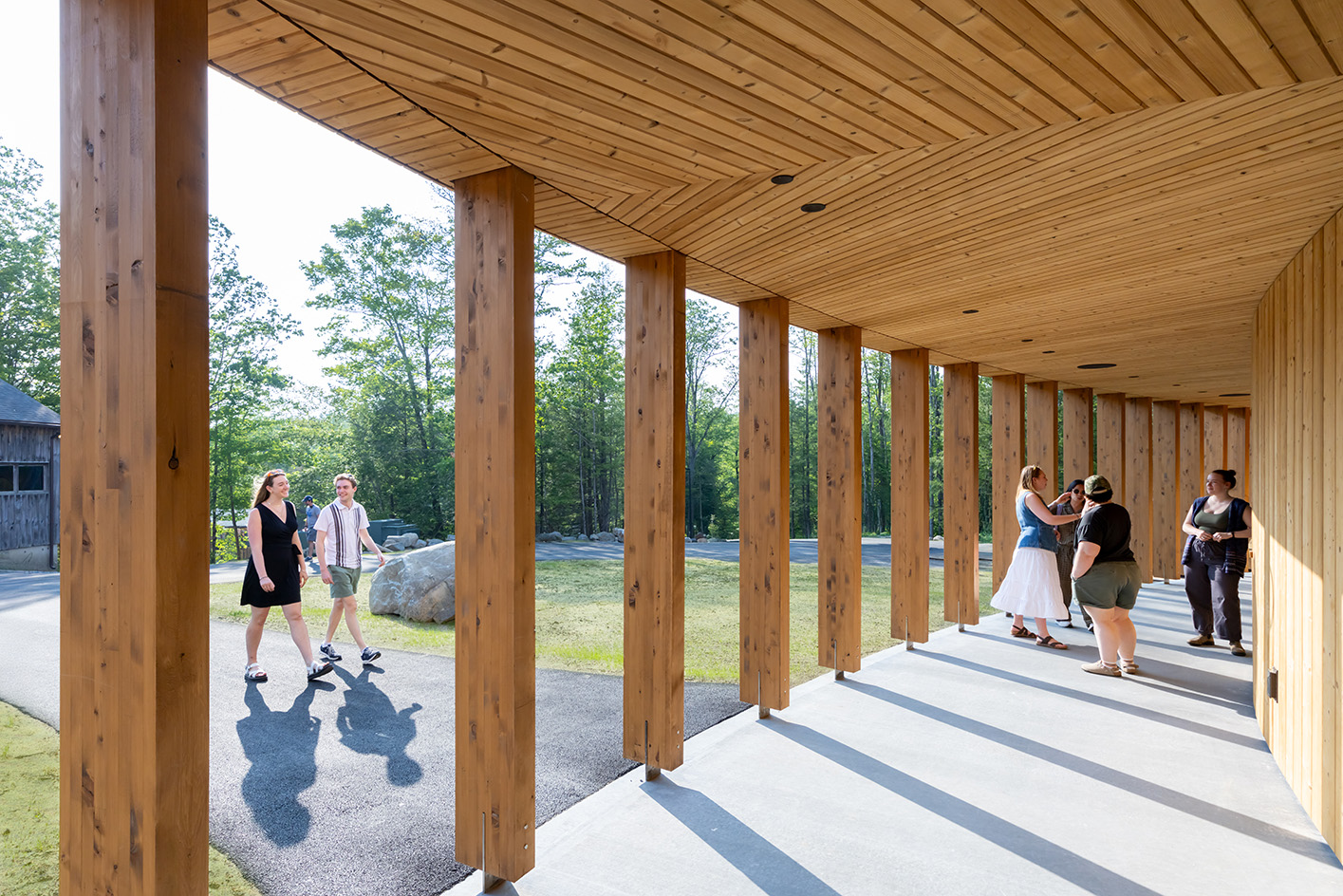
Inside, the main stage and all its seating and technical magic sit within a 'box', placed within the external, rounded volume. 'In theatre, we talk about the “black box”. We mean a rectangle that's hugely flexible. So this is a black box, a wooden box, and Francine takes it to the next level: it's a magic box because of all the ways that you can use the space,' says Tatge.
Houbin explains that the theatre opens in all four directions, combining, visually and physically, art and nature. It feels open and flowing. 'We imagined [dancer] Emily Johnson dancing on the roof – we wanted to make spaces that can be both formal and informal,' the architect says. There are also new support spaces, acoustic panels and ventilation, which not only work well but are also beautiful to look at. It all works perfectly in tune with both its natural and built environment at Jacob's Pillow, a perfect addition to the complex that hosted ‘the first theatre in the USA that was really designed for dance’, Houben says.
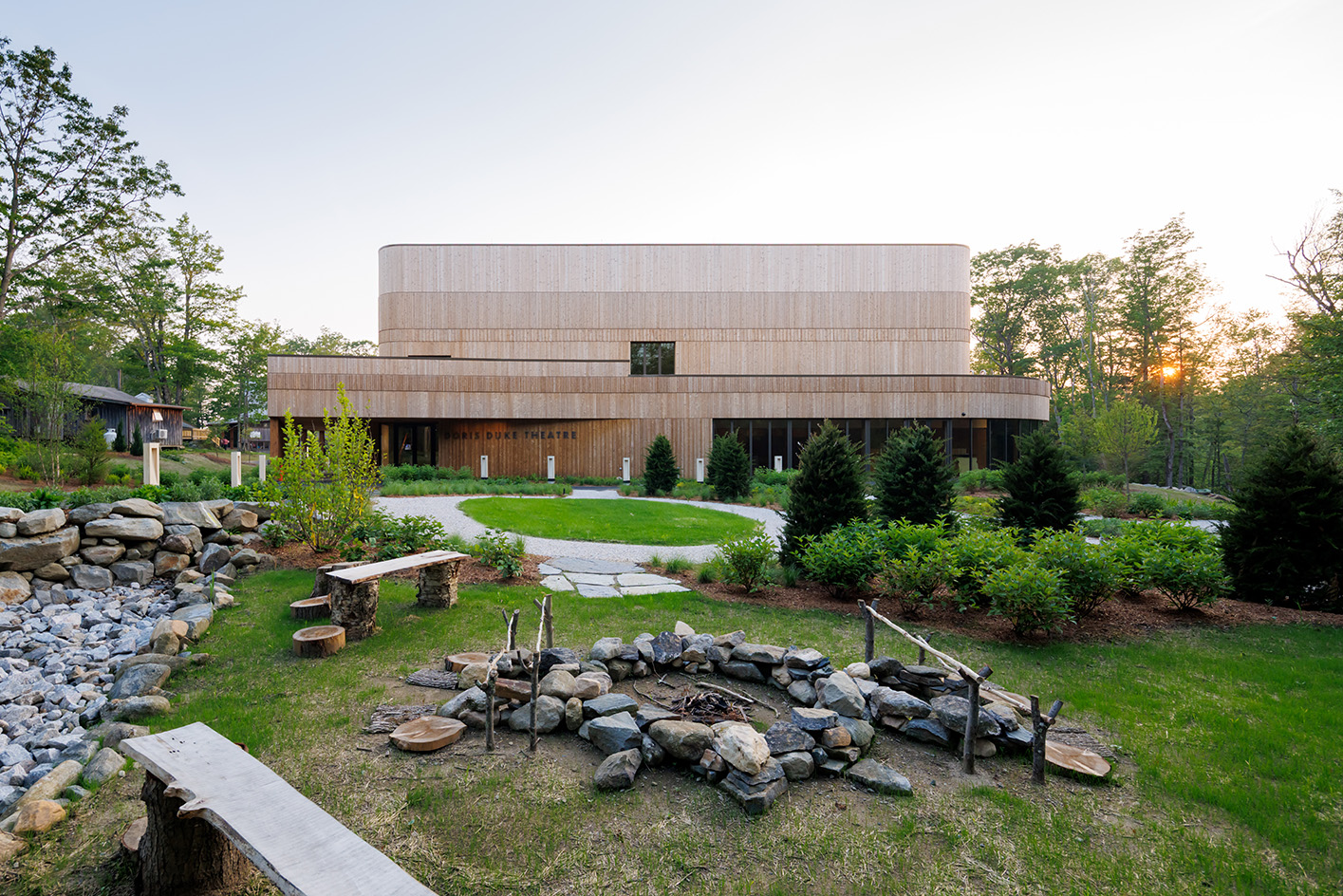
The reimagined Doris Duke Theatre opened at Jacob’s Pillow on 6 July 2025 with a week of festivities across the campus, including the Trinity Irish Dance Company, a three-day Pride celebration featuring The Illustrious Blacks, and performances by Indigenous Enterprise, Calpulli Mexican Dance Company, and Sydnie L. Mosley Dances.
Ellie Stathaki is the Architecture & Environment Director at Wallpaper*. She trained as an architect at the Aristotle University of Thessaloniki in Greece and studied architectural history at the Bartlett in London. Now an established journalist, she has been a member of the Wallpaper* team since 2006, visiting buildings across the globe and interviewing leading architects such as Tadao Ando and Rem Koolhaas. Ellie has also taken part in judging panels, moderated events, curated shows and contributed in books, such as The Contemporary House (Thames & Hudson, 2018), Glenn Sestig Architecture Diary (2020) and House London (2022).
-
 A breathtaking exhibition celebrating modernism’s transatlantic ties soars above Manhattan
A breathtaking exhibition celebrating modernism’s transatlantic ties soars above ManhattanCurated by interior designer Andre Mellone, 'Crossed Trajectories' at Galerie Gabriel's penthouse explores connections between nomadic post-war creatives Jean Royère, Roberto Platé and more
-
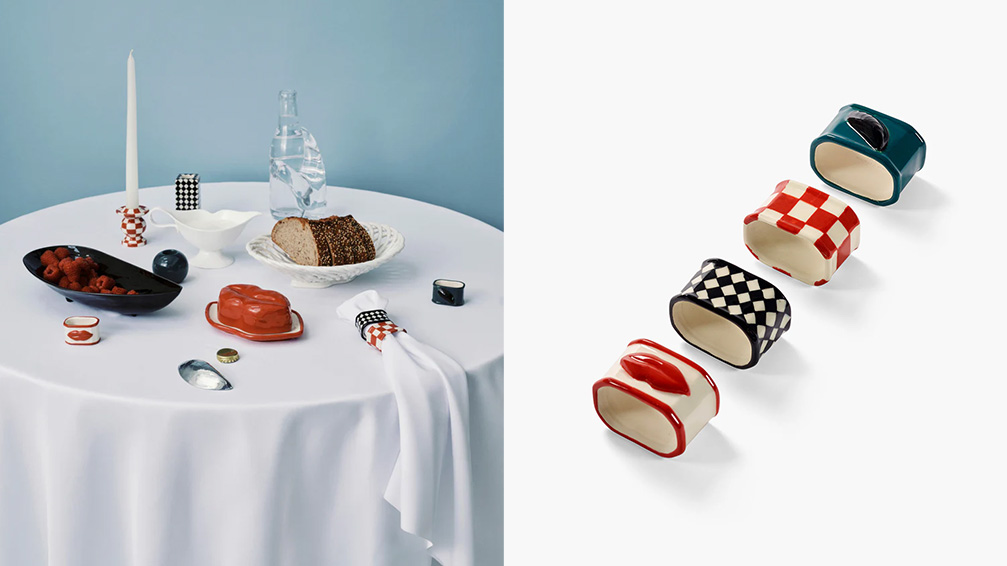 Sculptural, design-led napkin rings for festive tables
Sculptural, design-led napkin rings for festive tablesThe simple napkin ring harbours the potential to bring a stylish punch of personality to any table setting
-
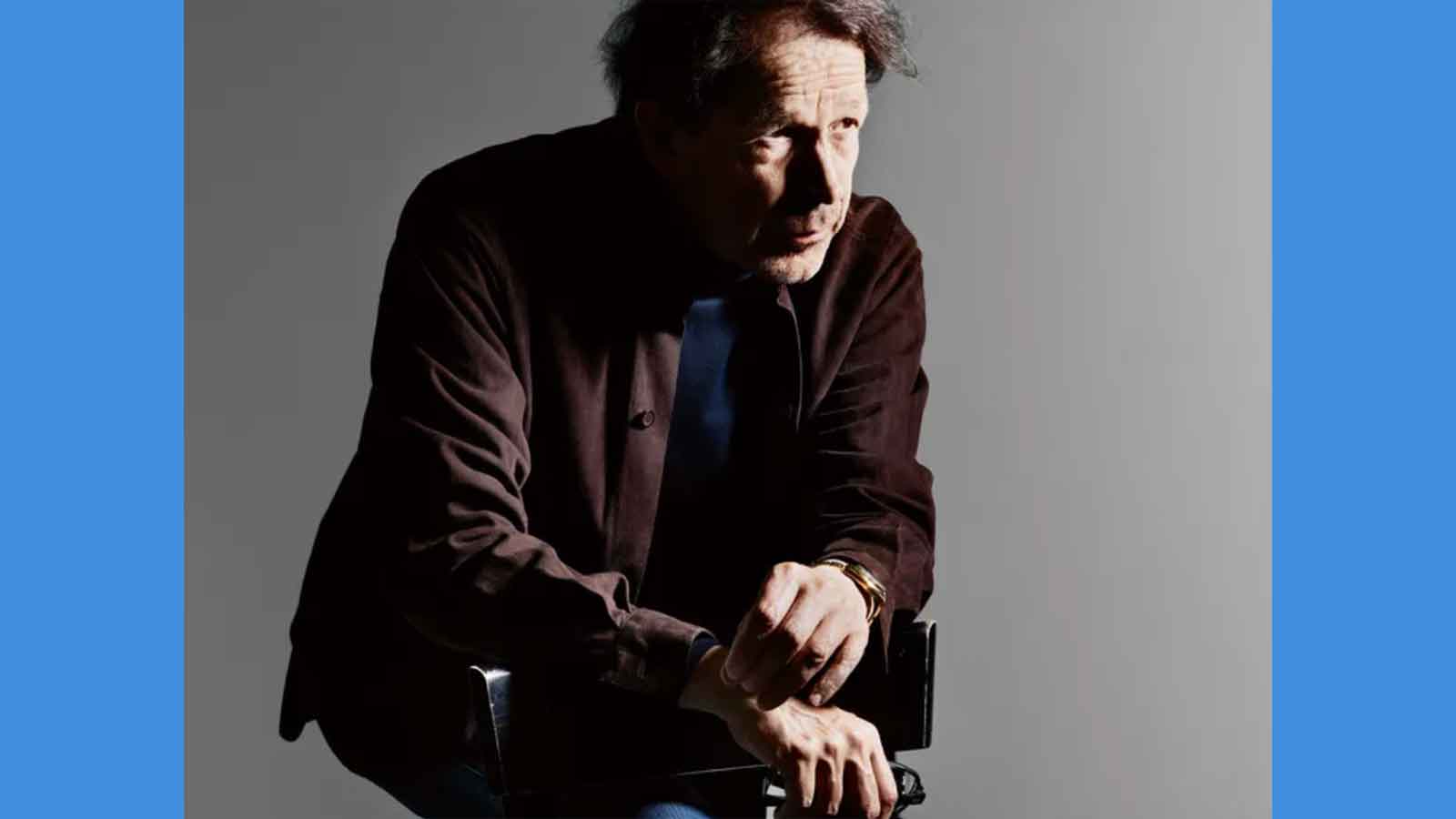 How Peter Saville came to art direct the best of contemporary culture
How Peter Saville came to art direct the best of contemporary cultureFrom Peter Saville's first steps with Factory Records and legendary album designs to his later work in art and fashion: we chart the history of the British art director
-
 The Stahl House – an icon of mid-century modernism – is for sale in Los Angeles
The Stahl House – an icon of mid-century modernism – is for sale in Los AngelesAfter 65 years in the hands of the same family, the home, also known as Case Study House #22, has been listed for $25 million
-
 Houston's Ismaili Centre is the most dazzling new building in America. Here's a look inside
Houston's Ismaili Centre is the most dazzling new building in America. Here's a look insideLondon-based architect Farshid Moussavi designed a new building open to all – and in the process, has created a gleaming new monument
-
 Frank Lloyd Wright’s Fountainhead will be opened to the public for the first time
Frank Lloyd Wright’s Fountainhead will be opened to the public for the first timeThe home, a defining example of the architect’s vision for American design, has been acquired by the Mississippi Museum of Art, which will open it to the public, giving visitors the chance to experience Frank Lloyd Wright’s genius firsthand
-
 Clad in terracotta, these new Williamsburg homes blend loft living and an organic feel
Clad in terracotta, these new Williamsburg homes blend loft living and an organic feelThe Williamsburg homes inside 103 Grand Street, designed by Brooklyn-based architects Of Possible, bring together elegant interiors and dramatic outdoor space in a slick, stacked volume
-
 This ethereal Miami residence sprouted out of a wild, jungle-like garden
This ethereal Miami residence sprouted out of a wild, jungle-like gardenA Miami couple tapped local firm Brillhart Architecture to design them a house that merged Florida vernacular, Paul Rudolph and 'too many plants to count’
-
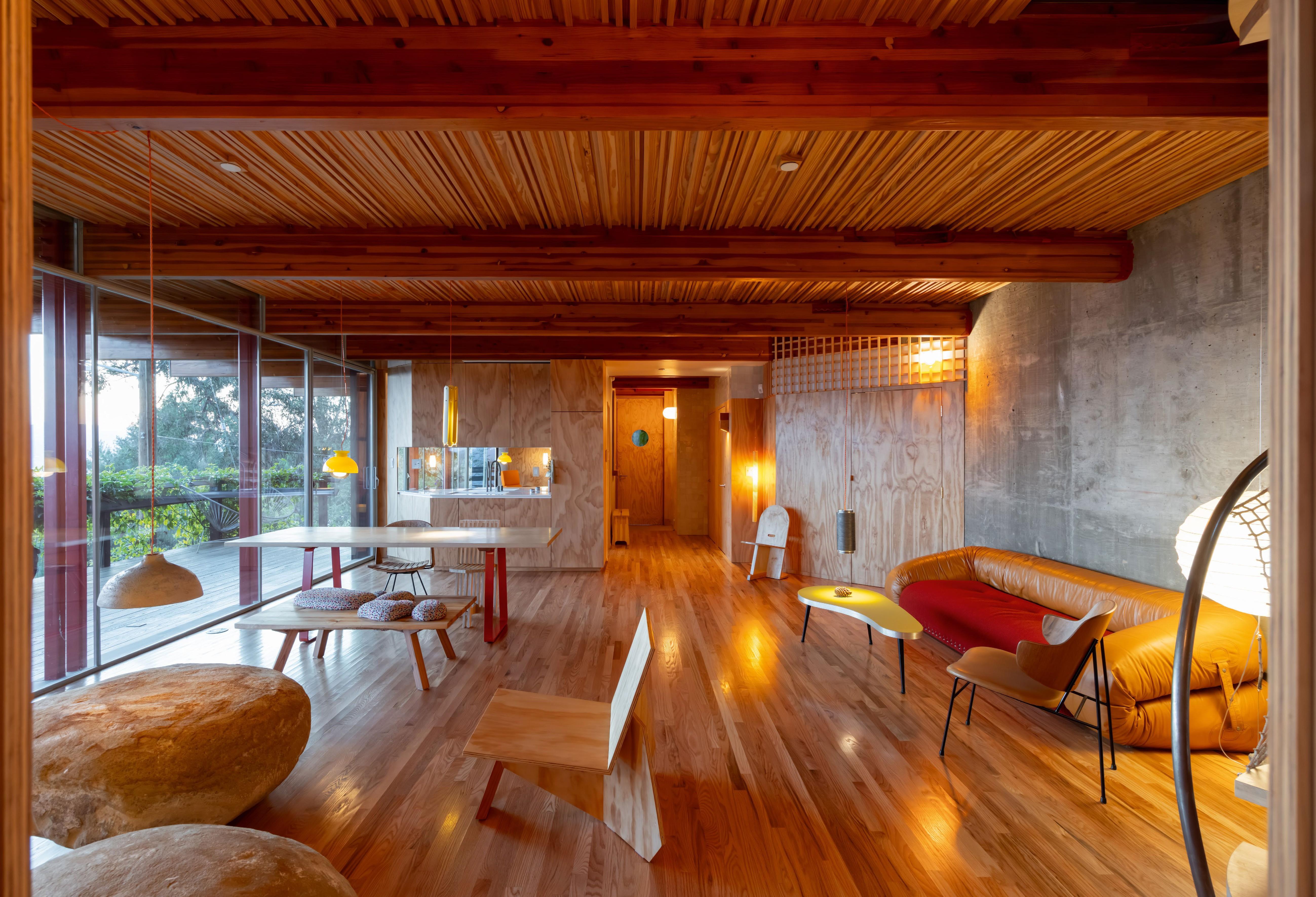 Tour Cano House, a Los Angeles home like no other, full of colour and quirk
Tour Cano House, a Los Angeles home like no other, full of colour and quirkCano House is a case study for tranquil city living, cantilevering cleverly over a steep site in LA’s Mount Washington and fusing California modernism with contemporary flair
-
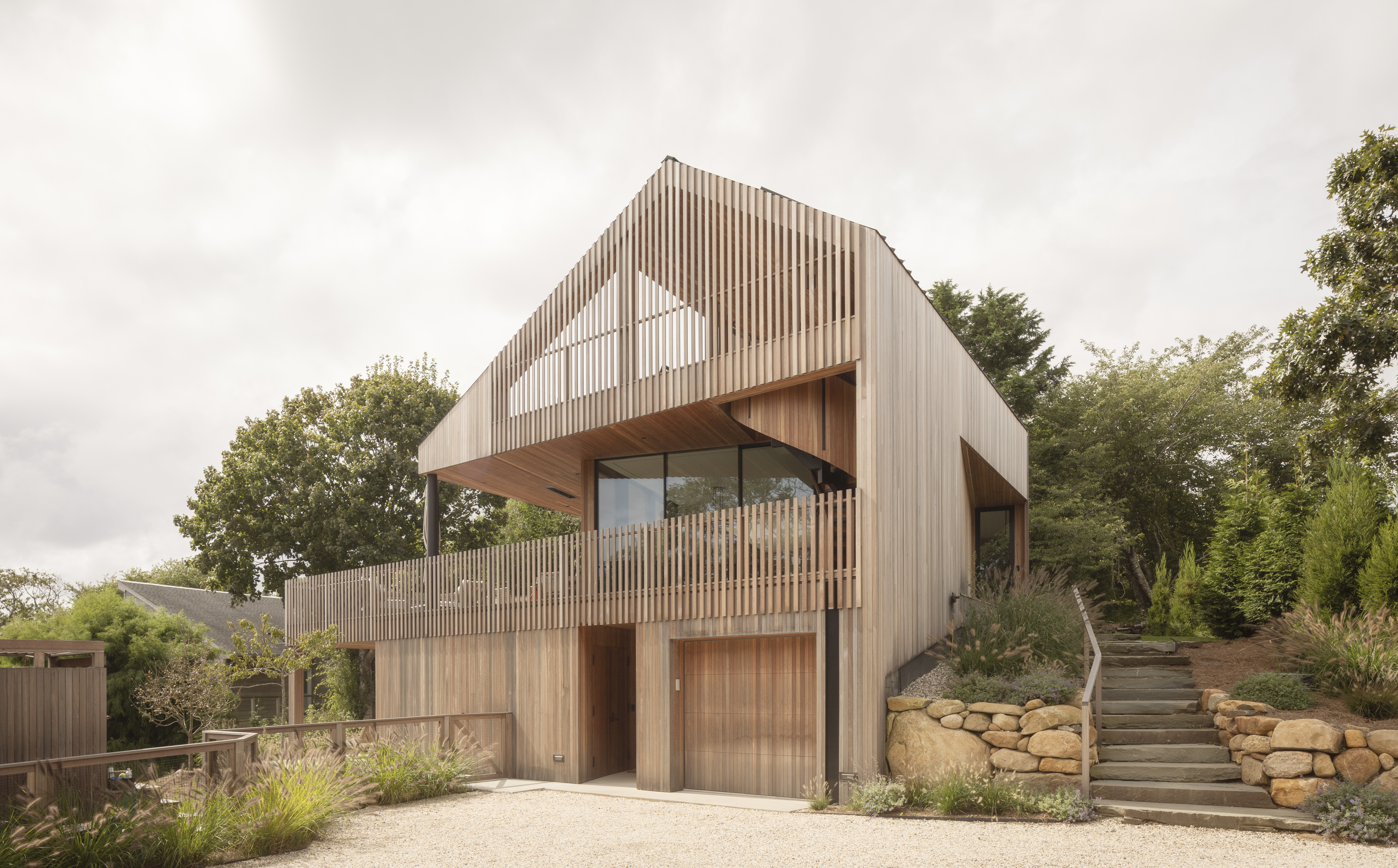 An ocean-facing Montauk house is 'a coming-of-age, a celebration, a lair'
An ocean-facing Montauk house is 'a coming-of-age, a celebration, a lair'A Montauk house on Hither Hills, designed by Hampton architects Oza Sabbeth, is wrapped in timber and connects its residents with the ocean
-
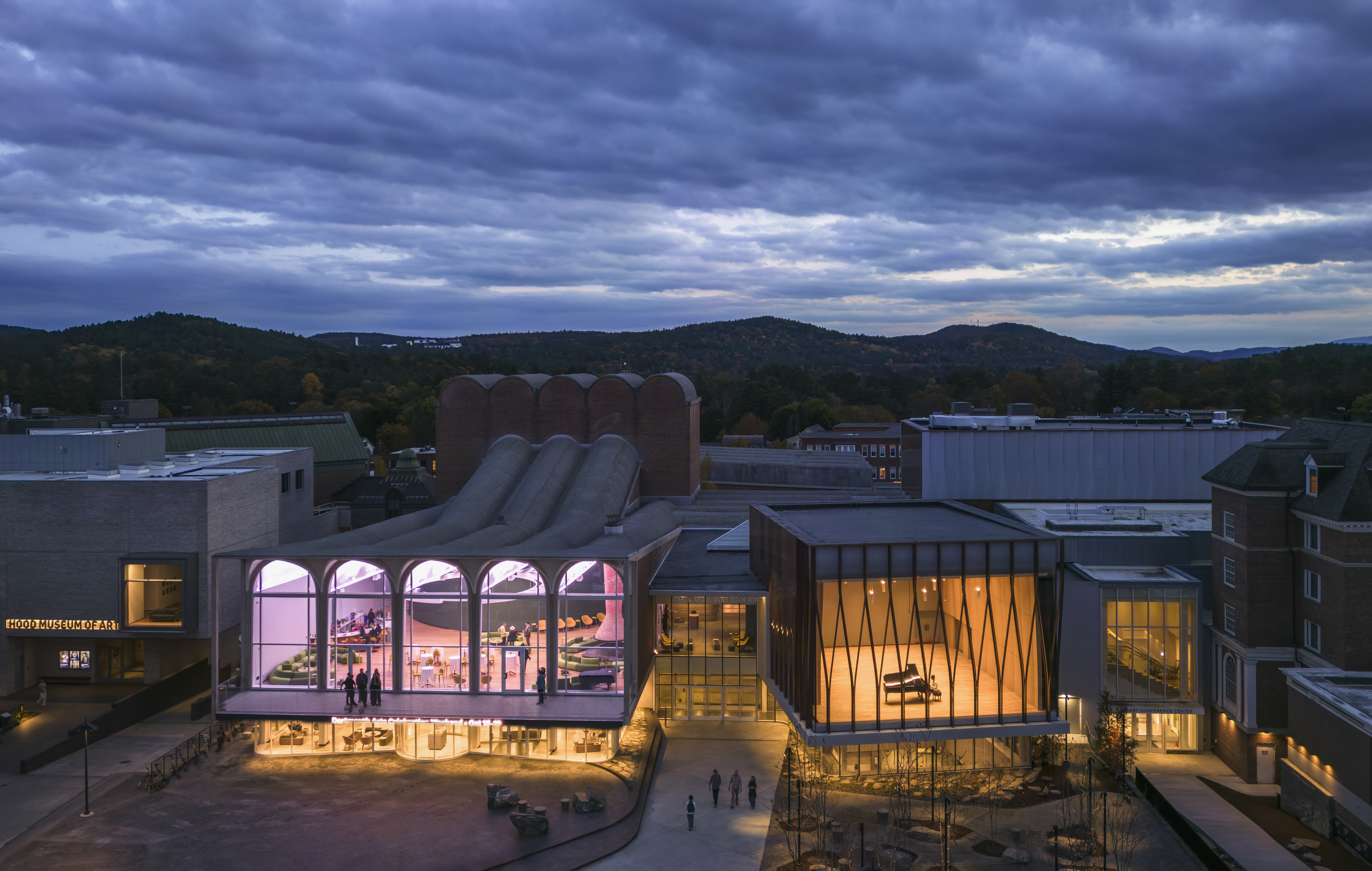 With a freshly expanded arts centre at Dartmouth College, Snøhetta brings levity to the Ivy League
With a freshly expanded arts centre at Dartmouth College, Snøhetta brings levity to the Ivy LeagueThe revamped Hopkins Center for the Arts – a prototype for the Met Opera house in New York –has unveiled its gleaming new update